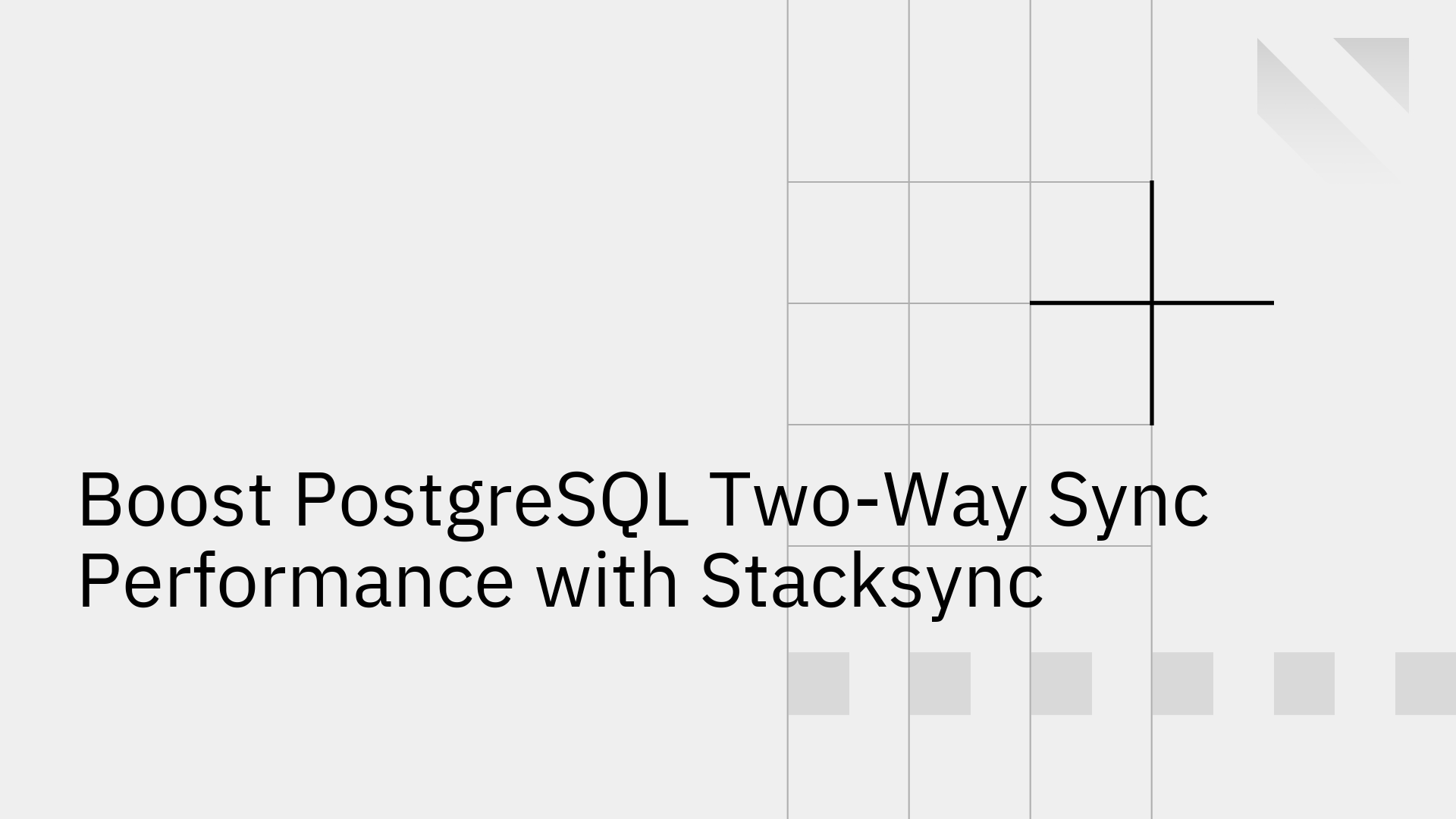
For modern enterprises, the hypothesis is clear: real-time data consistency across disparate systems like CRMs, ERPs, and other databases is essential for operational agility.
PostgreSQL two-way synchronization is a powerful method for testing this hypothesis, but achieving high-performance results is often impeded by variables like latency, data conflicts, and high maintenance overhead. This analysis will examine traditional methodologies and present Stacksync as a purpose-built solution engineered to overcome these performance hurdles, enabling fast, reliable, and scalable bidirectional synchronization.
An empirical analysis of traditional PostgreSQL two-way sync methods reveals several performance bottlenecks. The most significant variables affecting performance include high latency in data propagation, the risk of data conflicts and infinite replication loops, heavy resource consumption on the database, and the complexity of ongoing maintenance. These factors can degrade system performance and create a brittle data architecture that fails under operational stress.
PostgreSQL's native logical replication presents a built-in methodology for bidirectional sync, especially since version 16. However, our analysis shows it has inherent limitations. Before this version, any attempt to configure a two-way flow between nodes would result in infinite replication loops, as each node would endlessly send back changes it received from the other [6].
Even with recent improvements, the implementation remains complex. It demands deep technical expertise for the manual configuration of files like postgresql.conf and pg_hba.conf and requires meticulous management to prevent data conflicts. This manual overhead makes it a suboptimal methodology for enterprise-grade performance and reliability [3].
Third-party extensions like pglogical are another common approach. While they offer more advanced features than native replication, such as conflict handling, they introduce another layer of complexity and maintenance. The setup requires careful configuration on all participating servers to define nodes and replication sets. Managing conflicts and schema (DDL) changes across a distributed environment remains a significant operational burden that can lead to performance degradation and sync failures if not handled with precision [5].
Stacksync provides a modern, validated methodology that directly addresses the performance and complexity issues observed in traditional approaches. As a fully managed, enterprise-grade data synchronization platform, Stacksync is engineered to deliver high-performance bidirectional data flows without the associated engineering overhead.
Stacksync is architected for mission-critical operational use cases, synchronizing data changes with millisecond latency. This is achieved through a highly efficient, event-driven architecture that utilizes Change Data Capture (CDC). This method minimizes the performance load on both source and destination databases by listening for changes rather than running resource-intensive polling queries. This validated approach ensures a fast PostgreSQL sync for operational agility.
Our methodology is designed for scale. Stacksync handles millions of records from day one without requiring users to manage, provision, or scale any underlying infrastructure. The platform's architecture automatically accommodates growing data volumes and transactional throughput. This contrasts sharply with the manual effort needed to scale native replication, which often involves complex hardware and architectural changes.
A primary variable killing sync performance is unhandled conflicts and silent failures. Stacksync controls for this variable with a sophisticated issue management dashboard that provides complete visibility into sync errors. When a data conflict is detected, the platform prevents data corruption by flagging the issue. From the dashboard, engineers can resolve the problem with one-click retry or revert actions, dramatically reducing debugging time and ensuring data integrity. This level of control is crucial when you need to sync Close and PostgreSQL in real time with two-way sync.
Stacksync's no-code setup allows teams to configure and launch a robust, production-ready two-way sync in minutes. This repeatable, efficient process avoids the lengthy and error-prone methodology of writing custom scripts or manually editing configuration files. By abstracting away the underlying complexity of API authentication and data mapping, Stacksync dramatically accelerates time-to-value. You can explore our PostgreSQL two-way sync integration and workflow automation to see the methodology in action.
This comparative analysis summarizes the empirical differences between the Stacksync methodology and traditional approaches.
The conclusion is evident: Stacksync's managed approach offloads the engineering burden of data plumbing, empowering teams to focus on core business logic instead of infrastructure.
Stop letting complex and brittle sync processes create data silos and inhibit operational performance. Stacksync replaces fragile data pipelines with a fast, reliable, and scalable platform engineered for the modern enterprise. Eliminate data inconsistencies and unlock true operational agility across your organization.